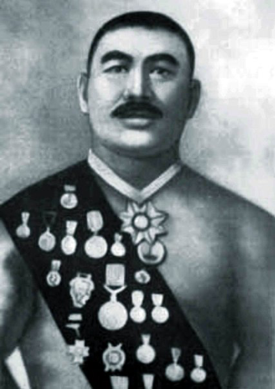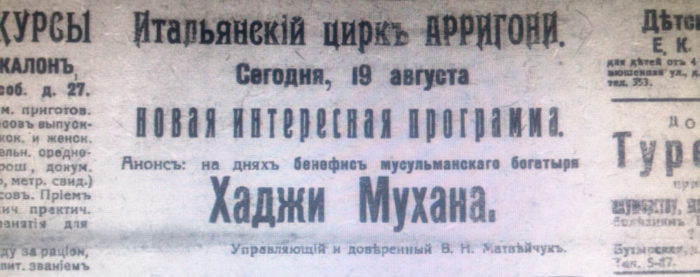NUR-SULTAN – 2021 marks the 150th anniversary of the great Kazakh wrestler and circus artist Kazhymukan Munaitpasov on April 7.

The great Kazakh wrestler and circus artist Kazhymukan Munaitpasov.
Munaitpasov is the first Kazakh world champion in Greco-Roman wrestling. He also became a multiple winner of international and heavyweight championships in wrestling. During his sports career, he won 48 medals and was awarded with a unique honorary title – Batyr (Hero) of the Kazakh steppe.
“Kazhymukan was a true patriot,” said Director of the Chokan Valikhanov Institute of History and Ethnology, Professor Ziyabek Kabuldinov. “He always remembered that he was a son of the Kazakh people. As a sign of respect for his people, he always wore an oriental chapan (a coat worn over clothes) and a Kazakh skull cap called the takiya.”

Munaitpasov is the first Kazakh world champion in Greco-Roman wrestling. He also became a multiple winner of international and heavyweight championships in wrestling.
Munaitpasov used to say that indolence is the most terrible evil in the world. His life full of challenges and victories demonstrates that he had a strong and brave character.
Munaitpasov was born in the village of Karaotkel, in the Akmola region in 1871. He grew up in an atmosphere of sports because various sports competitions were held on national holidays and celebrations.
He came from a poor family and he was accustomed to working hard. Then he started to engage in the Kazakh national wrestling circuit and successfully took part in wrestling competitions.
In 1901, a circus, which hosted wrestling competitions, was opened in Omsk. Munaitpasov, who dreamed of becoming a professional athlete, took part in one of the first official fights with famous professional wrestler Zlobin. After this fight, a Russian wrestler recommended him to enter the Lebedev school in St. Petersburg to study French wrestling.
In 1909, Munaitpasov joined a group of world champions and met the Greco-Roman wrestler of Estonian origin Georg Lurich. Lurich described the Kazakh wrestler as “a strong fighter, distinguished by his savagery and ferocity in the fight.”
“His worldwide popularity started to grow from that time on,” said Kabuldinov. “In the same year, Munaitpasov became the world champion in the German city of Cologne after a win over the famous German athlete Kristaps Veilands-Šulcs.”
In 1910, Munaitpasov won the gold medal in Buenos Aires. In the next year, he won the competition in Warsaw and won over famous Turkish wrestler Nurla in Istanbul.
In 1913, Munaitpasov defeated 18 athletes from around the world in Troitsk, Russia. “The Kazakh hero is performing in St. Petersburg, Moscow, as well as in other countries. His name is Mukan Munaitpasov. He is only 30 and already has numerous medals,” reads the story in the Kazakh national newspapers.
Munaitpasov again took first place at the World Championships in Paris in 1914.

One of the archival newspapers with the announcement of Munaitpasov’s performance as part of the circus program.
He performed in France, Germany, Argentina, Turkey, Iran, England, Sweden, Afghanistan, Russia and other countries during his sports career.
During World War II, Munaitpasov performed with a traveling circus in Kazakhstan and neighboring countries. In 1944, he donated 100,000 rubles to the Soviet National Defense Fund for construction of a military aircraft.
A museum in honor of Munaitpasov is open in the Temirlanovka village in the Turkestan region. Some of his personal belongings are kept by his relatives who reside in the Omsk region. Streets in Nur-Sultan, Almaty, Semei and other Kazakh cities are named in his honor. The central stadium of the Kazakh capital is also named in his honor. Two films “Haji-Mukan” (1978) and “Know ours!” (1985) are dedicated to the wrestler. The international tournaments in wrestling are held in his honor in Kazakhstan annually.
In 2001, a museum named after Munaitpasov was opened in the Otyrar district of the Turkestan region. It includes more than 3,000 exhibits, including his personal belongings, awards, documentary newsreels and photographs.


